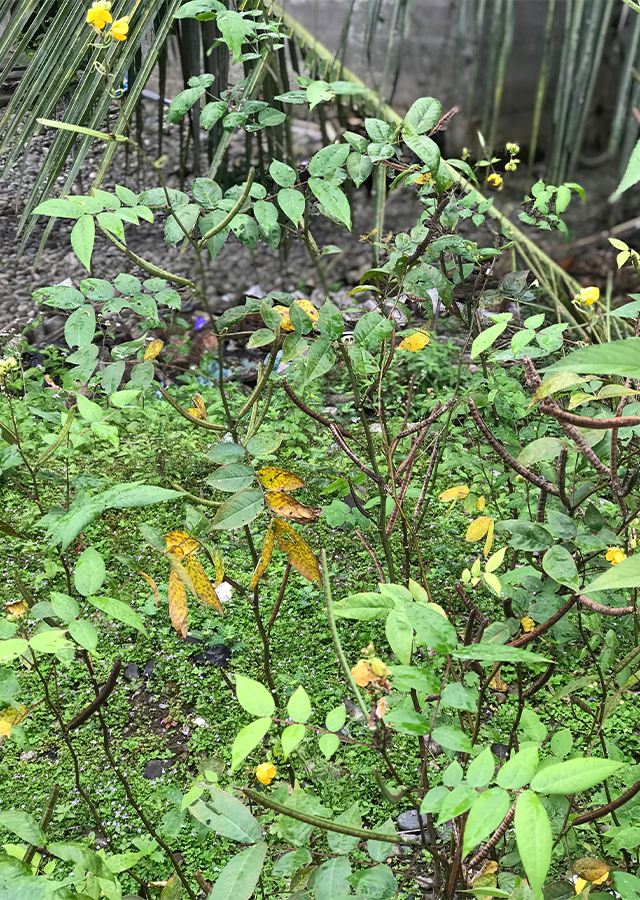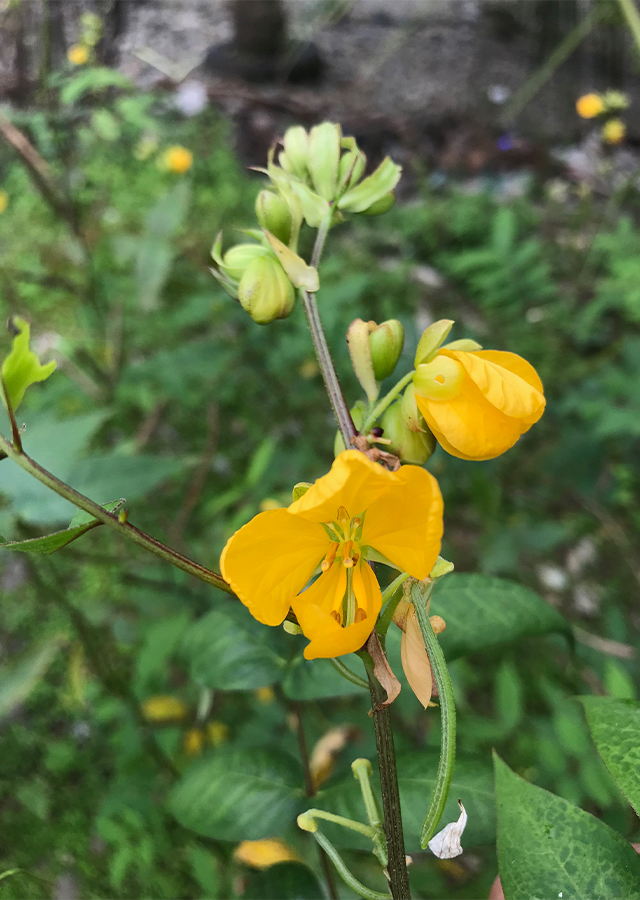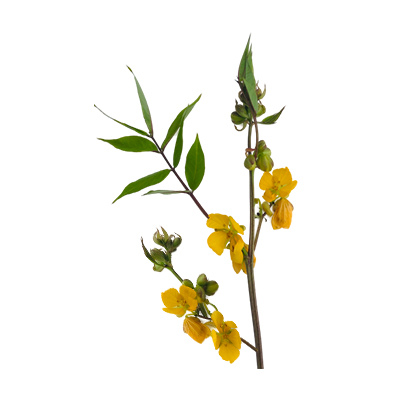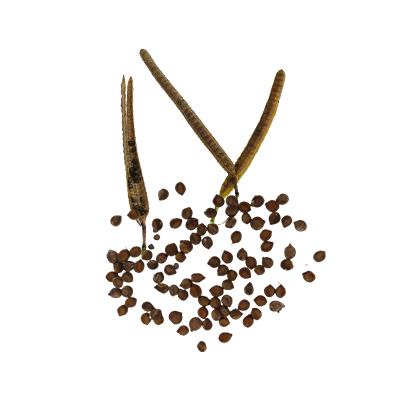Coffee Senna
Senna occidentalis (L.) Link.
Fabaceae
Location in our garden
Principal



Synonym
Cassia caroliniana Walter
Cassia ciliata Raf.
Cassia falcata L.
Habitus
Shrubs. Semi-annual to short lived perennial herb, grows up to 2 m tall.
Part Used
The Whole Plant
Growing Requirements
Full Sunshine
Habitat
Grassland
Overview
In Etymology, genus Senna is derived from the Arabic name "sana", which refers to the laxative leaves and pods. Species occidentalis means from the Western world. Coffee Senna is originally native to the Americas, and widely cultivated in the tropics and subtropics and is often naturalized in many regions. For local medicinal usage, the plant is often harvested from the wild, while the seed is sometimes used as a coffee substitute and also for tea. Non-woody plant parts are used as green manure and the plant has some ornamental value. Animals did not eat this species, when eaten in quantity the seed is deadly poisonous.
Vernacular Names
Jue ming zi (Chinese), Bentamaré (French), Habuso (Japanese), Stink- Kassie (German), Bataban (Mexican), Andadasi (Philippines), Ikhoshokhosho (Afrikaan), Bricho (Spanish), Ketepeng hutan (Malaysia), Balatong-aso (Philippines), sânndaèk khmaôch (Cambodia), kh'ét (Laos), khilek-thet (Thailand), vọng giang nam (Vietnam), Kasingsat (Indonesia).
Agroecology
Coffee senna grows in waste areas, mostly in or near villages, mainly occurs below 500 m and up to 1,200 m from sea level, with an average annual rainfall of 1,000-2,200 mm. A deep, well-drained, moderately fertile sandy loam and a full sun location are favored. Urban areas, open fields, plantations, sand dunes, and ditches are also located around it. The plant grows best in a moist environment, although it is resistant to dry conditions. It can become a much branched, subwoody shrub, and living 2-3 years under warm, humid conditions.
Morphology
- Stem - reddish purple, erect, 4-angled when young, becoming rounded with age.
- Leaves - pale green, alternate, pinnate, rounded at the base.
- Flowers - pale to bright yellow, 20-30 mm in diameter, in 2-6 flowered axils of the upper leaves sepals are red veined, 5 petals per flower.
- Fruits - dark brown, flattened, sickle-shaped pod with paler stripes along the edges when mature.
- Seeds - dark brown, flattened, hard, 5 mm long and 3 mm wide.
- Roots - robust primary with several laterals.
Cultivation
Seeds - once they have been dried for storage, the seeds will benefit from pre-sowing scarification to speed up and enhance germination. Approximately 95% of the scarified seeds sown in a potting mix germinated 5 to 36 days after sowing.
Chemical Constituents
Anthraquinone, flavonoids, alkaloids, saponins, terpenoids, tannins, steroids, phenol, glycoside.
Traditional Medicinal Uses
- Diuretic, febrifuge, stomach, and tonic are the entire plant. It is used to treat high blood pressure, rises, diabetes, fever, gallbladder, rheumatism, ringworm, and eczema.
- Leaf and seed extracts have shown antibiotic activity.
- For treating throat disorders, the plant is boiled and gargled. It is pounded and mixed with wood-ash, applied externally, and rubbed on leishmaniasis and eczema areas.
- The root is cholagogue, emetic, and purgative. An infusion is used to treat bilious fever, natural fever, stomach pain, and alleviate menstruation. A root tincture is rubbed on rheumatic areas.
- The leaf is used for renal calculus as a solution. For the treatment of afterbirth issues, fevers, coughs, colds, headaches, hemorrhage, and thrush, leaves are made into a tea. As a treatment for ringworm and other skin disorders, an ointment prepared from the leaves is added.
- As a cure for colds and stomach pain, a tea made from roots and dried flowers is used.
- The flowers are used in children to suppress stomach acid in preparation.
- The febrifuge and the sedative are the seeds. To relax one's nerves, an infusion is drunk, and as a cure for kidney disorders, hemorrhage, worms, and womb and tube washing.
Part Used
Reference Sources
- CABI. (2016). Invasive Species Compendium: Senna occidentalis (coffee senna). https://www.cabi.org/isc/datasheet/11450. (Accessed 27-04-2021).
- Fern, K. (2014). Useful Tropical Plants: Senna occidentalis. http://tropical.theferns.info/viewtropical.php?id=Senna+occidentalis. (Accessed 14-12-2020).
- Flora and Fauna Web. (2021). Senna occidentalis (L.) Link. https://www.nparks.gov.sg/florafaunaweb/flora/3/3/3353. (Accessed 5-12-2021).
- Lim, T.K. (2013). Edible Medicinal and Non-Medicinal Plants, vol. 6, Fruits. Springer. DOI 10.1007/978-94-007-5628-1_26. pp.18-33.
- Sulistiarini, D. (2018). Senna occidentalis (L.) Link. https://uses.plantnet-project.org/en/Senna_occidentalis_(PROSEA). (Accessed 5-12-2021).



